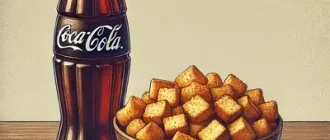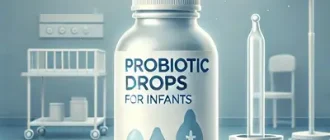Have you ever wondered why your child might be experiencing severe abdominal pain, vomiting, or an unusual absence of bowel movements? Bowel obstruction in children can be a serious condition, and understanding its signs, symptoms, and causes is crucial for getting the right help quickly. Let’s dive into the specifics of how to recognize bowel obstruction in children, and what actions you should take.
What Is a Bowel Obstruction?
Bowel obstruction occurs when the small or large intestine is blocked, preventing food, fluids, and gas from passing through the digestive tract. In children, this can happen for a variety of reasons, including congenital issues like Hirschsprung’s disease, intussusception (where one part of the intestine slides into another), or external pressure caused by hernias. Knowing what these causes are helps identify early signs and react appropriately.
Main Causes of Bowel Obstruction in Children
| Cause | Percentage of Cases (%) |
|---|---|
| Intussusception | 45% |
| Hirschsprung’s Disease | 25% |
| Foreign Objects | 15% |
| Adhesions from Prior Surgeries | 10% |
| Hernias | 5% |
How Common Are Bowel Obstructions in Children?
You may wonder, just how common is this problem? Statistics indicate that intussusception is the most common cause of bowel obstruction in children under three, with an estimated occurrence rate of 1 to 4 in 1,000 infants. Blockages can happen at any age, but younger children are particularly vulnerable. Congenital causes like Hirschsprung’s disease affect about 1 in 5,000 births in the United States, meaning that this condition, while not extremely common, is certainly not rare either.
Statistics of Bowel Obstruction Incidence in Children by Age Group
| Age Group | Percentage of Cases (%) |
|---|---|
| 0-1 year | 60% |
| 1-3 years | 20% |
| 3-6 years | 10% |
| 6-10 years | 5% |
| 10+ years | 5% |
Did You Know?
Hirschsprung’s disease is more common in boys than in girls, and it tends to run in families (National Institute of Diabetes and Digestive and Kidney Diseases).
Symptoms to Watch For: Is It Just an Upset Stomach?
It’s not always easy to tell when a child has a bowel obstruction versus a simple upset stomach. So, what should you look for? Symptoms of a bowel obstruction typically include:
- Severe abdominal pain that comes and goes
- Swelling or bloating of the abdomen
- Vomiting, particularly greenish (bile-stained) vomit
- Constipation or an inability to pass gas
While some of these symptoms could be attributed to more benign conditions, the combination of severe, persistent symptoms such as vomiting bile and swollen abdomen should trigger an immediate visit to the emergency room. The faster the obstruction is diagnosed, the better the outcome.
Diagnostic Tools: What to Expect at the Hospital
If a doctor suspects a bowel obstruction, they will use a combination of physical examination and imaging tests. Abdominal X-rays, ultrasound, and sometimes a CT scan are common diagnostic tools used to identify the location and severity of the blockage. The cost for an abdominal X-ray typically ranges from $100 to $500 in the United States, depending on location and medical facility.
Treatment Options: What Are the Next Steps?
The treatment for bowel obstruction depends largely on the cause and severity of the blockage. For intussusception, a non-surgical air or barium enema can often be used to correct the problem without the need for invasive surgery. Success rates for such procedures are high, ranging from 70% to 90% depending on how early the treatment is administered.
Success Rates of Different Treatments for Bowel Obstruction
| Treatment Type | Success Rate (%) |
|---|---|
| Non-Surgical Air/Barium Enema | 80% |
| Surgical Correction | 70% |
| Medication for Partial Obstruction | 50% |
However, if the enema is unsuccessful, or if the blockage is caused by a physical malformation or severe adhesion, surgery may be required. Early detection dramatically improves the success rates of such treatments, which is why knowing the symptoms is so important.
What Happens if You Wait Too Long?
Ignoring symptoms of bowel obstruction can lead to serious complications, including tissue death in the intestines, perforation, and life-threatening infections like peritonitis. According to recent statistics, delayed treatment can lead to complications in up to 20% of cases, which often requires more extensive surgery and can result in a longer hospital stay.
Did You Know?
Children who have had one bowel obstruction are at an increased risk of experiencing another within their lifetime, especially if the cause was related to adhesions from prior surgeries (American Pediatric Surgical Association).
Prevention: Can Bowel Obstruction Be Prevented?
While many causes of bowel obstruction in children are congenital or unavoidable, there are some steps that can help minimize risk. Ensuring that children avoid swallowing small objects, such as toy parts or coins, can reduce the likelihood of foreign object obstructions. Additionally, early medical evaluation of symptoms like chronic constipation can prevent more severe issues down the road.
Probability of Recurrence of Bowel Obstruction in Children
| Cause of Initial Obstruction | Recurrence Probability (%) |
|---|---|
| Intussusception | 30% |
| Hirschsprung’s Disease | 20% |
| Adhesions from Prior Surgeries | 40% |
| Foreign Objects | 10% |
Our Editorial Team’s Advice
If your child shows any of the symptoms listed above, don’t hesitate to seek medical attention. Acting quickly can make all the difference in treatment outcomes. It’s always better to be cautious when it comes to your child’s health. For parents, recognizing the early signs of bowel obstruction can not only alleviate pain for your child but also potentially save their life. Remember, as the saying goes, an ounce of prevention is worth a pound of cure.
About the Author
Reyus Mammadli is the author of this health blog since 2008. With a background in medical and biotechnical devices, he has over 15 years of experience working with medical literature and expert guidelines from WHO, CDC, Mayo Clinic, and others. His goal is to present clear, accurate health information for everyday readers — not as a substitute for medical advice.








Please help I have a grandson who will be 5 in April he is happy and always eager to learn and have fun but he does not have bowel movements and we are not sure where it goes ?? His parents have finally brought him to the doctors but they are not getting any where being told it’s normal etc. I am so sure he needs to have test done to find out what it is before it’s too late. The stools he does have are very little not much at all he is a good little eater and his parents do not allow junk food in his diet. Please list the possibilities that could be the problem. Thank you